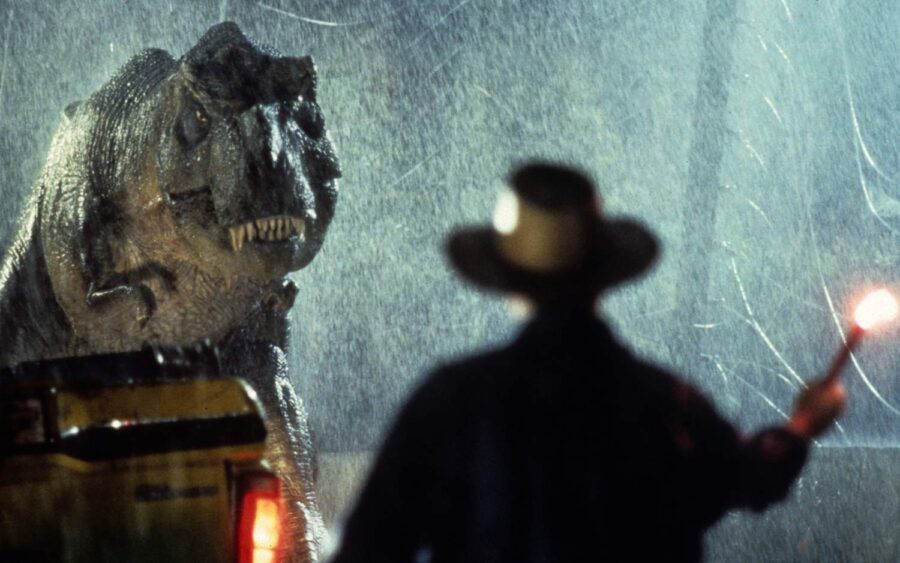Hollywood Math No Longer Adds Up

“Hollywood math” isn’t taught in any school, and unlike real mathematics that helps explain our reality, this particular type of math is unmoored from our plane of existence. It’s the term used to describe the creative accounting practices studios use when determining a movie’s production budget, which can seemingly grow or shrink depending on what’s more beneficial. So far, 2024 has proved that the old techniques are no longer working, and budgets are so far out of control that movies are being set up to fail.
Jurassic Park, After Inflation, Costs Less Than The Marvels

Everyone knows inflation is running rampant, with the dollar menu having been replaced by the three-dollar menu, but movie budgets exploded from Waterworld’s $175 million being considered ludicrous to Fast X, which includes Ludicrous, reportedly hitting $378 million. The ground-breaking Jurassic Park, which pioneered new special effects techniques, cost $68 million back in the early 90’s, while Jurassic World, costs $432 million. Creative use of Hollywood math can bring down those numbers, but as Disney discovered, it only works so well.
The Marvels Could Never Make Enough Money

On the one hand, Covid-19 safety protocols were in place while The Marvels was being filmed, which contributed to the rapidly ballooning budget, which allegedly topped off at $270 million. On the other hand, Disney’s failure to plan properly, with multiple interviews discussing the number of completed scenes that were cut from the final product, signifies a comfort level with wasteful spending. With the stunning final result, even after accounting for Disney’s Hollywood math accounting, of the greatest flop in MCU history, expect future films to have a much smaller budget.
Records Must Be Set To Be Profitable

Part of the problem is that when a film makes money, such as Dune: Part 2 reaching almost $800 million worldwide, it generally has to clear 2.5x the production budget. This considers marketing, which we rarely learn the true cost of, and how studios must split ticket prices with the theaters.
Hollywood math is complicated and nebulous, with the public never learning most of the true cost of making movies. However, we can tell that the end result lately is depressingly lackluster.
Sony And A24 Solved The Equation

There is one studio that’s a notable exception to all of this, and it’s not A24, as their films are typically low budget (Civil War is the most expensive, costing $50 million), and that’s Sony. Somehow, Sony has managed to consistently movies that cost under $100 million, including all of their live-action non-Spider-Man movies since Venom. This means that, yes, despite popular belief, Morbius earned money for Sony when all was said and done.
Morbius Made A Profit….No Really

The use of Hollywood math, and in this case, British tax breaks for filming in England, helped drop Morbius’ budget to the point where a box office of barely over $100 million, plus streaming and distribution deals, is all it took. All the creative math and shuffling of accounts from one shell production company to another can’t do much when the base budget is more than the GDP of some countries.
Warner Bros Hollywood Math Almost Cost Them A Franchise

In one famous case, Hollywood math even backfired and nearly killed off an entire franchise when Warner Bros and George Miller engaged in a court battle over the production budget for Mad Max: Fury Road. Furiosa’s production was significantly delayed due to the court case centered around Miller’s company claiming it deserved a bonus for coming in under budget at $157 million. Warner Bros countered, saying that the budget was actually $185 million.
Both numbers are correct, but the extra cost was for reshoots, which Miller claimed were to be waived from the total. As litigation proceeded, the topic of wether or not to count the tax breaks for shooting in Australia, Miller’s home country, also came up. This is why in most fields, one plus one equals two, but in Hollywood math, one plus one can equal five unless profit sharing is at stake, then it can equal negative two.
Will Hollywood Keep Trying To Bury Failures? Or Is There Hope?

The box office in 2024 is as dismal a wasteland as that of George Miller’s landmark franchise, and it’s mainly because of these bloated budgets, resulting in movies that the general public has little to no interest in. The gap between what the public wants and what studios think the public wants has never been as vast as it is today, which is why, for once, Hollywood math is failing to bail out the major entertainment companies.












